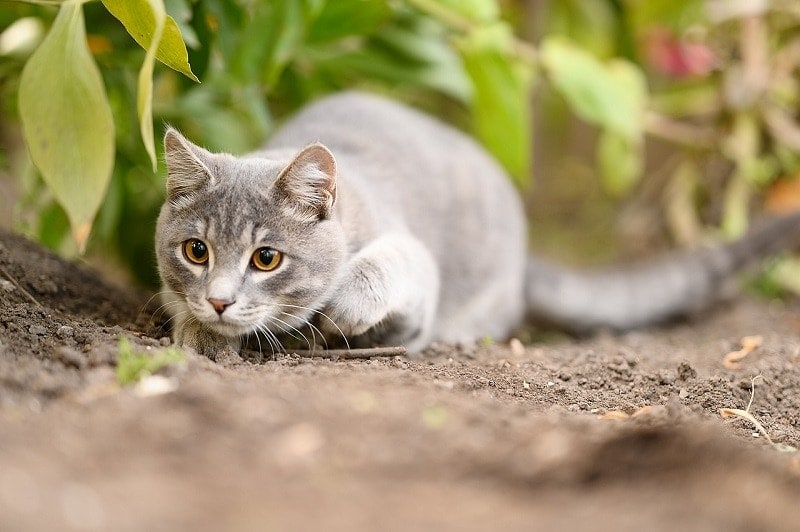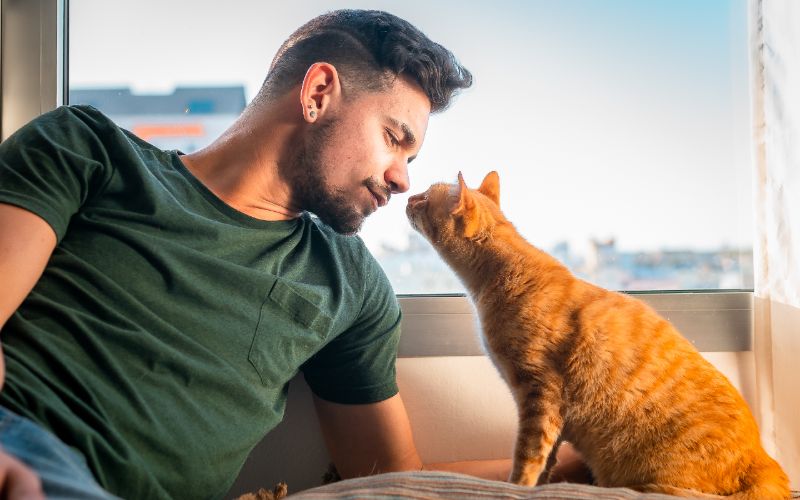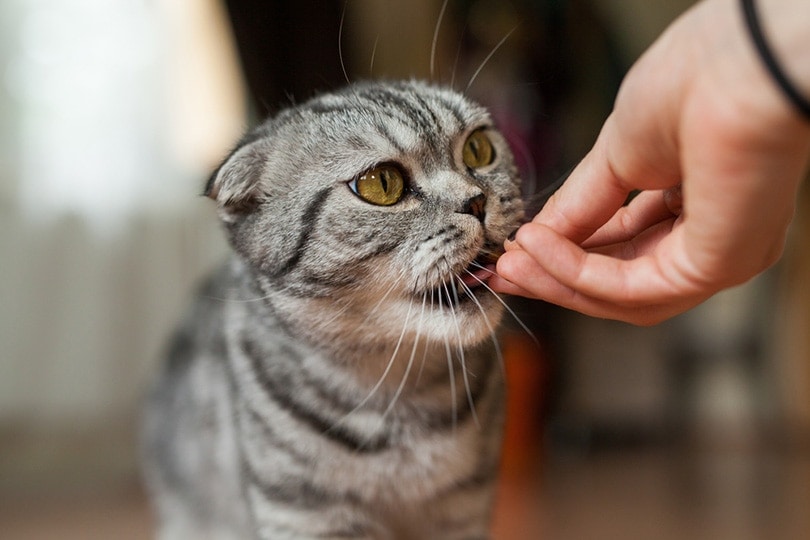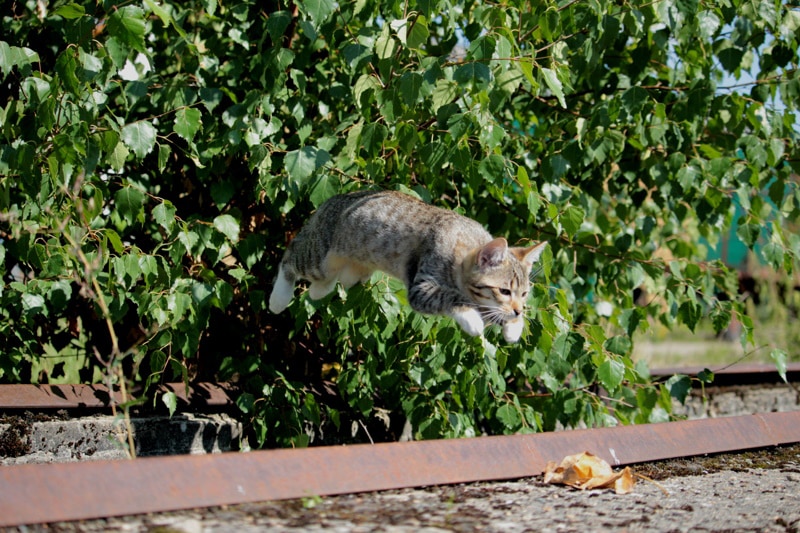Do Cats Eat Frogs? Vet-Approved Dangers & FAQ

Updated on

As natural predators, cats display stalking and hunting behaviors from an early age. If your cat spends time outside, chances are they’ve turned these predatory instincts towards live prey, but does that include frogs? Cats kill and often eat frogs, which are frequently slower and easier to catch than other prey animals.
In this article, you’ll find facts about the number of frogs cats kill and eat each year and the impact this has on overall amphibian populations. We’ll also answer some frequently asked questions, such as whether it’s dangerous for cats to eat frogs and how to prevent your kitty from killing the amphibians.
Cats and Frogs: Deadly Interactions
While most people know that cats kill many birds and small mammals each year, their interactions with reptiles and amphibians are often deadly too. According to a study published in 2013 1, cats are estimated to kill between 86 and 320 million amphibians each year in the United States. This total also includes toads, salamanders, and newts, but the evidence is clear that cats kill frogs.
An Australian study from 2019 offers even more specific evidence that cats eat frogs. This study examined the contents of cats’ stomachs and feces to calculate their data. Based on this information, the study estimated that cats kill about 100 million frogs in Australia each year 2.
Other studies have found that cats play a role in the extinction of reptile and amphibian species in island habitats 3. Free-roaming cats pose a threat to all wildlife, including frogs. Feral cats are responsible for most of the damage, but owned cats with outdoor access can also kill frogs and other amphibians.

Frequently Asked Questions About Cats Eating Frogs
Is It Dangerous for Cats to Eat Frogs?
Eating frogs can be dangerous for cats for a couple of reasons. Some amphibians secrete toxins from their skin that can sometimes be life-threatening for cats. The Cane toad and the Colorado River toad are the most dangerous toad species.
Pickerel frogs, widespread across the eastern United States, also produce toxic skin secretions to protect themselves from predators. Exposure to this substance can irritate the cat’s eyes and mouth. They are known to kill smaller predators. If your cat eats a pickerel frog, it could possibly be life-threatening.
Many species of frogs in tropical and subtropical climates carry a parasite called a liver fluke that can be passed to your cat if eaten. When swallowed, these parasites move from the intestines to the bile ducts, where they mature. Infected cats can develop liver and gallbladder problems with the flukes infesting their bile ducts.
Other parasites carried by frogs include tapeworm (Spirometra mansonoides), which infects cats and dogs, and Salmonella bacteria which infects many species including humans and cats.

What Are the Signs My Cat Has Eaten a Frog?
Depending on the type of frog they eat, you may not notice any signs your cat has been snacking on amphibians unless you find a partially eaten carcass or witness the kill yourself.
If your cat eats a poisonous frog (or toad), the first sign you’ll probably see is severe drooling, mouth irritation, and possibly red eyes. More serious signs that may develop include the following:
- Vomiting
- Diarrhea
- Tremors
- Seizures
- Weakness
- Fast or slow heart rate
- Breathing difficulties
If you notice any of these signs, contact your veterinarian immediately.
How Can I Stop My Cat from Eating Frogs?
The best way to stop your cat from eating frogs is to keep them indoors. Any time your cat spends outside unsupervised gives them the chance to hunt and kill prey, including frogs. However, indoor cats that play on screened-in porches or catios could still be exposed to lizards and frogs who wiggle through gaps in the screens.
Double-check your catio or porch frequently for any rips or gaps in the netting. Consider adding an extra layer of mesh along the bottom of the screen to reinforce it against sneaky frogs. If you have an outdoor cat, the best you can do is check your yard or property for frogs or toads as often as possible. If you find any, put on gloves and relocate them to a safe area off the property.
Try to supervise your cat when they’re outside or check on them frequently. Watch for evidence that they’re hunting and killing frogs or any signs of toxicity that we discussed in the previous section.

Conclusion
If they get the chance, cats will absolutely kill and eat frogs. Unfortunately, this hunting threatens amphibian populations and local ecosystems. Eating frogs also puts cats at risk of developing parasites or poisoning, if the species eaten is toxic. It’s safest for frogs and cats if you prevent your kitty from hunting and killing the amphibians. Keep your cat inside if you can, and try to supervise outdoor access if you can’t. Consider training your cat to walk on a leash or providing a properly reinforced catio for safer outdoor play.
Featured Image Credit: katya-guseva0, Pixabay












